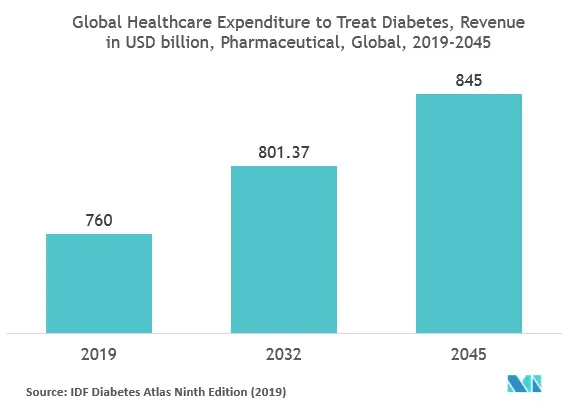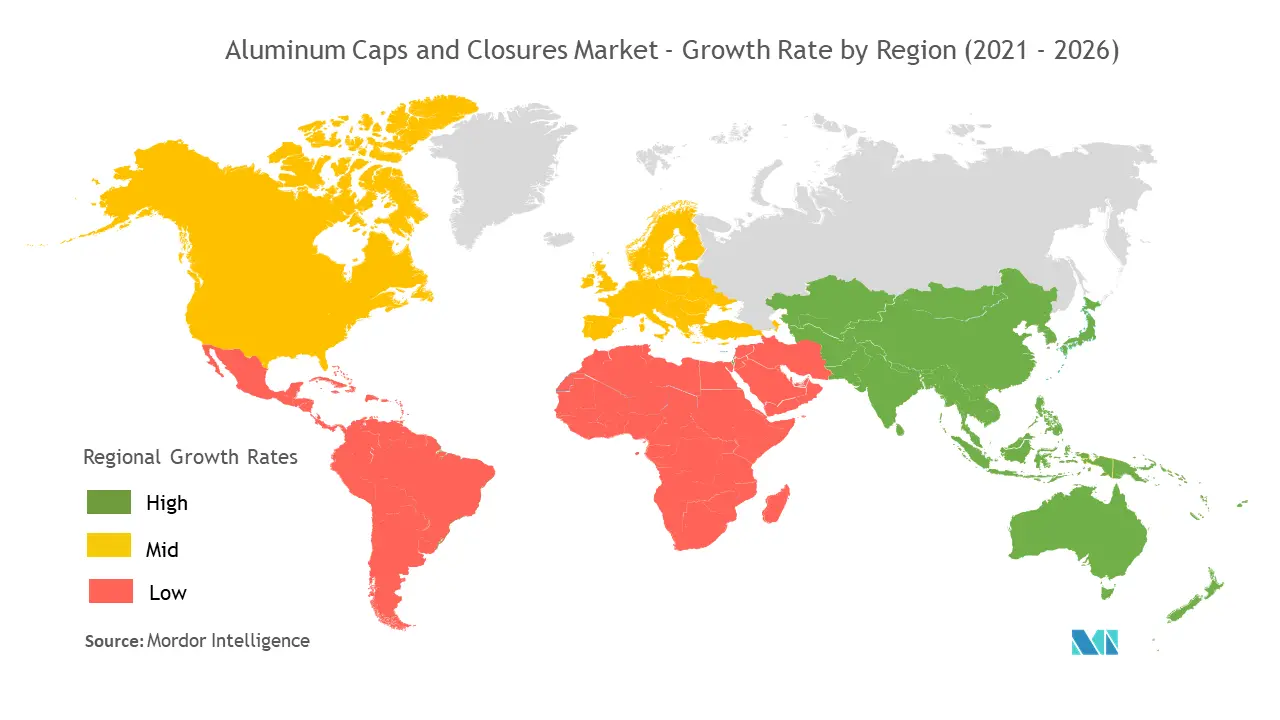Market Trends of Aluminum Caps and Closures Industry
This section covers the major market trends shaping the Aluminum Caps & Closures Market according to our research experts:
Pharmaceutical Sector is Expected to Witness the Highest Growth Rate
- The pharmaceutical and healthcare industry demonstrates a persistently sturdy growth rate, with surging demand in several regions, like North America, Europe, and Asia-Pacific. Aluminum caps and closures used in the pharmaceutical sector are sterile and are generally composed of layered material. Besides, aluminum can be highly customizable: natural or colored, plain or embossed. Thus, pharmaceutical packaging can be supplied according to the consumers’ needs.
- The increased pharmaceutical production and the regulatory changes are further favoring value-added, child-resistant, and senior-friendly closures, which are anticipated to drive the market in the foreseen period. For instance, in 2019, Growpacker Inc., a contract manufacturer of THC- and CBD-infused edibles in the United States, announced the launch of its patent-pending Cannasafe, a child-resistant lid for aluminum cans containing THC-infused beverages.
- Moreover, aluminum closures create a highly effective barrier without affecting the product’s taste and smell. All materials used in aluminum closures are perfectly neutral from an organoleptic point of view, helping to prevent taste, color, and other changes that occur in drugs. Additionally, the usage of insulin shots, syringes, and injection pens is increasing with the increase in the diabetic population across the world. This is further driving the use of aluminum caps in syringe nozzles, vials, and other cartridges.
- Additionally, The pharmaceutical industry is exponentially growing with the increase in the demand for over-the-counter (OTC) medicines. Most of the OTC medications, like cold and cough remedies (Syrups), ophthalmic tubes, and injections, consist of aluminum hubs, lids, vials, and other closure materials. For instance, as per the IQVIA’s institute report, the OTC drug market is growing at a global rate of 3-6%. Since most of the aluminum caps and closures are used in the OTC market, it is expected to further boost their demand in the global arena.

North America is Expected to Hold a Major Share
- The North American region is expected to have a significant market share, which is home to many companies, such as Reynold Group Holding Limited, Silgan Holding, Cary Company, O.Berk Company, and Crown Holding. Moreover, the food and beverage industry is one of the major consumers of the aluminum caps and closures market in the region. Aluminum caps or closures are also used to store food products, such as grains, typically stored in glass containers.
- Aluminum caps and closures are used in the beverage industry due to their recycling advantages and ease of disposal. Also, aluminum closure increases the shelf life of the product. According to the NBWA, based on the US census population statistics and beer shipment data, the US consumers aged 21 years and older consumed 26.5 gallons of beer and cider per person during 2018. Also, according to the Beer Institute Annual report, 2018, the US beer industry sells more than USD 119.3 billion in beer and malt-based beverages to US consumers each year.
- Furthermore, in the pharmaceutical sector, concerning the environmental issues and enhancing the brand appeal, various manufacturers are replacing outer box products with plastic bottles made from recycled plastic and prefer aluminum closures to distinguish.
- Additionally, Stringent regulations by the FDA, CPSC, and ISO have been instrumental in driving product innovation and sophistication across the pharmaceutical, food and beverage, and cosmetic industries. To meet the regulation, Aluminum Cap and closure manufacturers are increasingly using product features, such as convenience of use, child resistance, and senior friendliness. For instance, in February 2020, Ball corporation announced building two specialty beverage aluminum can plants in the United States due to its rise in aluminum packaging.


